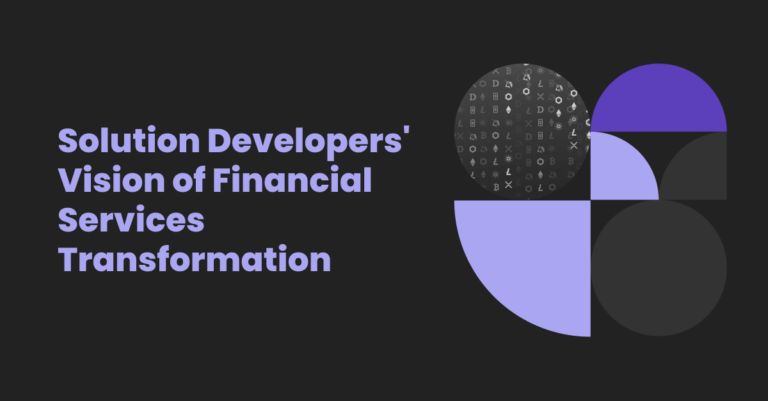Imagine that you need to build a house. You can choose a standard project and add some customization to the layout, as long as the architect approves and the walls stay intact. Or you can draw up a plan that precisely meets your requirements — even if you wish for a cylindrical home with an entrance on the second floor.
The difference is that in a typical project, everything is already thought out: the optimal location of communications, thermal insulation of walls, ways to fill the foundation, and a million other things that are not visible from the outside. You get a warm and cozy home but within the framework of a ready-made project.
This is how an IT framework works. You use a ready-made template and fill it with your code. You lose flexibility, but the program works stably: the framework takes care of all the main things. Under the hood of the framework, there are a million nuances: for example, working with the file system and databases, error handling, password protection.
Without software frameworks, you will need to think about everything yourself. It gives you more freedom, but also more responsibility. If the authorization to the database is implemented crookedly, the code can be hacked through this curvature. If you have not written error handling, the program may not work, and it will be hard to find out why.
So, the definition of an IT framework is a support structure or system that holds parts together, has something stretched over it, or acts as the main structure.
The Difference Between CMS, Frameworks, and Writing a Code from Scratch

We analyze the example of frontend development. Let’s say you need to create a website. There are 3 approaches that you can use: write code from scratch, use the framework, or use a CMS.
Writing a Code from Scratch
Open IDE you use or simply Notepad and write the entire site from a blank line. This is convenient: you can do absolutely everything for yourself. Exactly as you need it. You can use any technology.
Let’s make an analogy with drawing. Writing code from scratch is like being in front of a completely blank sheet of paper, with all the possible drawing tools at hand, from markers to crayons—a complete flight of fancy.
This approach has its drawbacks. First, it is long and expensive. Secondly, it isn’t easy. You need to carefully check the performance of each function so that nothing gets stuck. This approach has a high entry threshold: a novice developer will not create a full-fledged product from scratch. The price of every mistake is elevated.
Using a CMS
You may have heard the names of the most popular framework examples: WordPress, Joomla, Drupal. Using a CMS is almost the opposite of the first option. Any confident computer user can create a website using a CMS, and he does not even need to be a developer.
CMS is, in fact, a ready-made website. You need to fill it with content: upload text, images, videos, and other content. And customize the appearance: fonts, colors, styles, and more. If we continue the analogy with drawing, then using a CMS is a coloring book. You have already drawn everything for you, and it is impossible to miss. It remains only to choose the color of the felt-tip pen and paint over the necessary parts of the drawing.
Using the Framework
The software frameworks are an intermediate option for flexibility and complexity between writing code from scratch and using a CMS. If writing code from scratch is drawing with any tools on a blank sheet of paper, and using CMS is coloring, then using a framework’s meaning is drawing in a notebook in a checkered box. On the one hand, you can still draw anything you want. On the other hand, there are already guidelines and notepad borders, so it’s easier to edit.
Types of Frameworks
You can classify programming frameworks for web applications on two grounds: the tasks they solve and the size. So, what are framework types?
Backend Frameworks
These are web development software frameworks that run on the server-side. They are mainly responsible for individual, but critical parts of the application, without which it will not work correctly. Here are some of the most popular frameworks examples, as well as the languages they work with:
- Django — Python;
- Symfony, Laravel — PHP;
- Express.js — JavaScript;
- Ruby on Rails — Ruby.
The rules and architecture of server frameworks do not allow you to develop a web application with a rich interface. Such frameworks are responsible for the logic of the system. They are very good at this and give a rich set of tools.
Frontend Frameworks
Frontend frameworks are responsible for the appearance of the web application. Unlike the server-side ones, they have nothing to do with the logic of the work. This type of computer framework works in the browser. You can use them to improve and implement new user interfaces, create different animations, and create single-page applications. Here are some of them:
- Angular;
- Vue.js;
- Svelte;
React is not formally a programming framework but a library, but the value of this tool is so great that it is constantly compared with other web frameworks.
All of these tools use JavaScript.
Fullstack Frameworks
If the framework solves problems both on the server and on the client-side, this is full-stack. As an example, we can name Meteor. Both its server and client sides work in JavaScript. So you can create and use the same code for them. The next feature is the “real-time mode”. When you change something in one interface, changes occur in the rest.
Fullstack also includes the Next frameworks.js and Nuxt. The first one is created on top of React.js, and the second one runs on the base Vue.js. Such web frameworks can be challenging for beginners.
Pros of Frameworks
- Development on the computer framework allows you to achieve the simplicity of the maintainability of the project
- Projects are easily scaled and upgraded.
- Framework-based solutions work much faster
- Solutions based on frameworks are superior to self-written systems in terms of security
Cons of Frameworks
- Many functions are created individually because code frameworks contain only the essential components of business logic
- An understanding of business processes is required
How to Choose a Suitable Web Framework

The listed functionality is common to all frameworks. But their wide range leads to the fact that the developer is lost and can not choose a specific tool. The following criteria help to narrow the circle:
- preferred language;
- features of the framework.
The tools are equally suitable for developers of different levels. Of course, it is better to use frameworks that are easier to learn. However, sometimes written according to the old school rules and rarely used, suitable tools can lead you to success.
How to Learn How to Use Web Frameworks
You can learn how to use software frameworks yourself. To find a guide to web frameworks, read their documentation. The main advantage of official sources is their relevance. Such training materials use the features of the latest versions of the frameworks. If there are no simple guides in the documentation, you can search for them on other sites.
YouTube is a good source of information. Video hosting offers reviews and step-by-step guides. Watching these videos will help you choose the proper framework if you are still in doubt. Don’t forget about StackOverflow. But you need to come there with specific questions that have arisen while studying or using the framework.
Own Development
Self-development refers to creating websites in programming languages, for example, in pure HTML or PHP. At the same time, all the functionality is being worked out from scratch.
When It Fits
You need a unique atypical project, and the time for its development is unlimited. Developing a website entirely from scratch is justified when you create something unique, which is not available on the market, and you are sure that the costs will pay off. Perhaps this is a project that plans to process a massive amount of data and super-heavy loads.
The site should become a competitive feature of the company if you want to implement unique and complex functionality. For example, you have an online store: to distinguish yourself from your competitors; you are planning to implement a product search by image or link. Or you want to surprise users with the fact that they can buy products using the voice interface.
Pros:
- You will get the feature set you want
- High performance
- Full development control
- Freedom of creativity — you are limited only by the capabilities of the development language
Cons:
- High time costs
- Highly qualified and experienced developers are required, as they will have to create everything from scratch
- You need a big budget
To Conclude
To own something unique, you need to invest a lot of resources. Without a team of experienced programmers — nowhere. You do not need to start studying any software framework if you do not have solid knowledge in a particular area, it’s a material part. The programming field is designed so that first, you have to pass through a ton of information by trial and error to understand the main thing.
It is good when there are teams that are ready to take full responsibility. Develux will help you to implement any project, even the most daring. We conduct IT consultations: focus on the big picture and deal with the technical component.
















